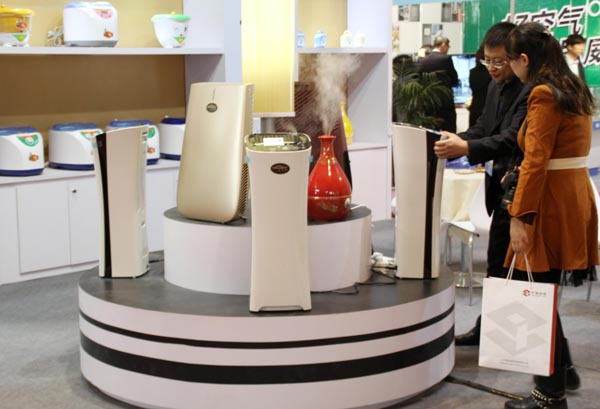A drive to apply new standards to air, water purifiers
Consumers need a way to assess domestic brands' efficiency, quality.
How much would you pay for cleaner air and water? At the same time, how do you know the expense is justified?
In Shanghai, Zeng Wenjing spent 7,000 yuan ($1,123) for an air purifier and 10,000 yuan for a domestic water purification system. Zeng said it was a worthwhile investment, because the two devices will help to keep his family healthy.
With rising awareness of healthy living, purchases of domestic appliances that enhance the indoors environment has leveraged a large share of China's market.
Data from GfK, a service provider of market research and consultancy, show that about 1.7 million air purifiers were sold in China in 2013, a 116 percent year-on-year increase.
In terms of water purifiers, combined sales revenue in all price ranges reached 9.5 billion yuan, up 79.5 percent year-on-year, according to CWN, a specialized network in the water purification sector.
But despite the skyrocketing sales revenue, market insiders said the market needs to be more regulated with a clear national standard, and consumers need to better understand what they are buying.
At a department store on Shanghai's West Nanjing Road, 34 models of 12 brands of air purifiers were available in the showroom.
"Various brands, various indexes, various prices - it can be quite confusing for consumers to choose a suitable device," said Zhang Ziqi, a 34-year-old accountant shopping for an air purifier.
Zhang then decided to buy a model from South Korea after she compared prices and functions.
In China's expanding air and water purifier market, foreign brands are occupying a big share.

















